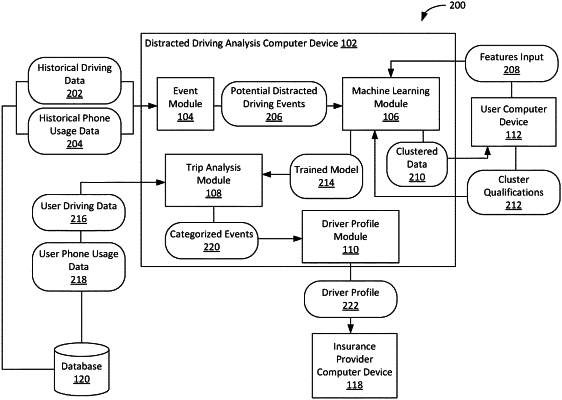| CPC G06Q 40/08 (2013.01) [G06F 18/214 (2023.01); G06N 5/04 (2013.01); G06N 20/00 (2019.01); G06V 20/597 (2022.01); H04W 4/027 (2013.01); H04W 4/029 (2018.02)] | 21 Claims |

|
1. A distracted driving analysis system for identifying distracted driving events, the distracted driving analysis system comprising at least one processor in communication with at least one memory device, wherein the at least one processor is programmed to:
receive labeled training data, the labeled training data including a plurality of driving event records, each driving event record of the plurality of driving event records being labeled as an actual distracted driving event or a passenger event, wherein each driving event record of the plurality of driving event records includes computing device usage by a user that occurred within a time period of a driving event associated with the user, the plurality of driving event records including a plurality of actual distracted driving events and a plurality of passenger events;
identify, using a supervised machine learning algorithm, one or more first common features of the plurality of actual distracted driving events by processing the labeled training data, the one or more first identified common features being related to driving or computing device usage, wherein at least one first identified common feature of the one or more first identified common features of the plurality of actual distracted driving events indicates how a user interacts with a user computing device of the user as a driver;
identify, using the supervised machine learning algorithm, one or more second common features of the plurality of passenger events by processing the labeled training data, the one or more second identified common features being related to driving or computing device usage, wherein at least one second identified common feature of the one or more second identified common features of the plurality of passenger events indicates how a user interacts with a user computing device of the user as a passenger;
generate a trained artificial neural network based at least in part upon the one or more first identified common features, the one or more second identified common features, and the labeled training data;
receive a new driving event associated with a second user; and
determine, using the trained artificial neural network, whether the new driving event is an actual distracted driving event or a passenger event.
|